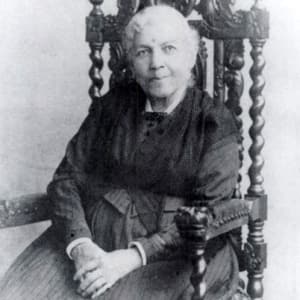
Virginia Hamilton
Virginia Hamilton was a multiple award-winning children’s author whose work celebrated diversity and the African-American experience.
Synopsis
Born in Yellow Springs, Ohio, in 1936, Virginia Hamilton wrote more than 40 books. Her first was Zeely (1967), and it would set the tone for much of her subsequent work, handling race not as an "issue" but simply as a part of life. Chiefly remembered for her children’s books, among her best known are The Planet of Junior Brown (1971), M.C. Higgins, the Great (1974) and The People Could Fly (1985). M.C. Higgins won Hamilton a National Book Award and a Newbery Medal, the first awarded to a black writer. She died of breast cancer in February 2002.
Early Years
Virginia Hamilton was born on March 12, 1934, the youngest of five children. She graduated at the top of her high school class, going on to first attend Antioch College and then Ohio State University. She moved to New York City in 1958, working various jobs while writing on the side and studying fiction at the New School for Social Research.
In New York, Hamilton met poet Arnold Adoff, and the pair were married in 1960. Adoff supported them fulltime as a teacher, so Hamilton spent her time writing and had two children.
'Zeely' Published
In 1967, Zeely was published, the first of more than 40 books. Zeely was named an American Library Association Notable Book and won the Nancy Bloch Award. The book set the tone for Hamilton’s life work, depicting racial diversity in a way that was unusual for children’s books—i.e., not as an issue to confront but as another aspect of life.
Her books explored themes like tradition and upholding generational memory, especially in terms of African-American life in the United States. She managed to cover this ground across genres as varied as biography (e.g., of W.E.B. DuBois and Paul Robeson), science fiction and mystery, the last of which would first appear in the form of 1968’s The House of Dies Drear, which won the Edgar Allan Poe Award for Best Juvenile Mystery.
Array of Awards
In 1969, Virginia Hamilton and her family moved back to Yellow Springs, Ohio and built a home on a few acres of the Hamilton family farm. There she settled into a literary life, devoting more time to her writing and publishing The Planet of Junior Brown, which was named a Newbery Honor Book and won the Lewis Carroll Shelf Award in 1971.
Hamilton’s 1974 book, M.C. Higgins, the Great, was a landmark for the writer. The book—about a boy with a beautiful imagination and his Sarah’s Mountain home—was widely lauded, winning Hamilton the Newbery Medal and making her the first black author to receive the honor. M.C. Higgins also won the National Book Award, the Lewis Carroll Shelf Award, the Boston Globe–Horn Book Award and The New York Times Outstanding Children’s Book of the Year, among others.
Majestic Literary Legacy
The following year, Hamilton’s elegant folktale book The People Could Fly appeared and won several awards. It was followed in 1988 by In the Beginning: Creation Stories From Around the World, which won a plethora of national awards as well.
More accolades were to come, as in 1989 Hamilton was named distinguished writing professor at the Graduate School of Education at Ohio State. In 1990 she received the Catholic Library Association’s Regina Medal, given annually “for continued, distinguished contribution to children’s literature.”
Hamilton went on to win the Hans Christian Andersen Award for Writing (the highest international recognition bestowed on an author or illustrator of children’s literature), a MacArthur Fellowship, the Laura Ingalls Wilder Award and the University of Southern Mississippi de Grummond Medal.
Virginia Hamilton continued to write until she died of breast cancer on February 19, 2002. Three of her books were published posthumously: Time Pieces, Bruh Rabbit and the Tar Baby Girl, and Wee Winnie Witch’s Skinny.




